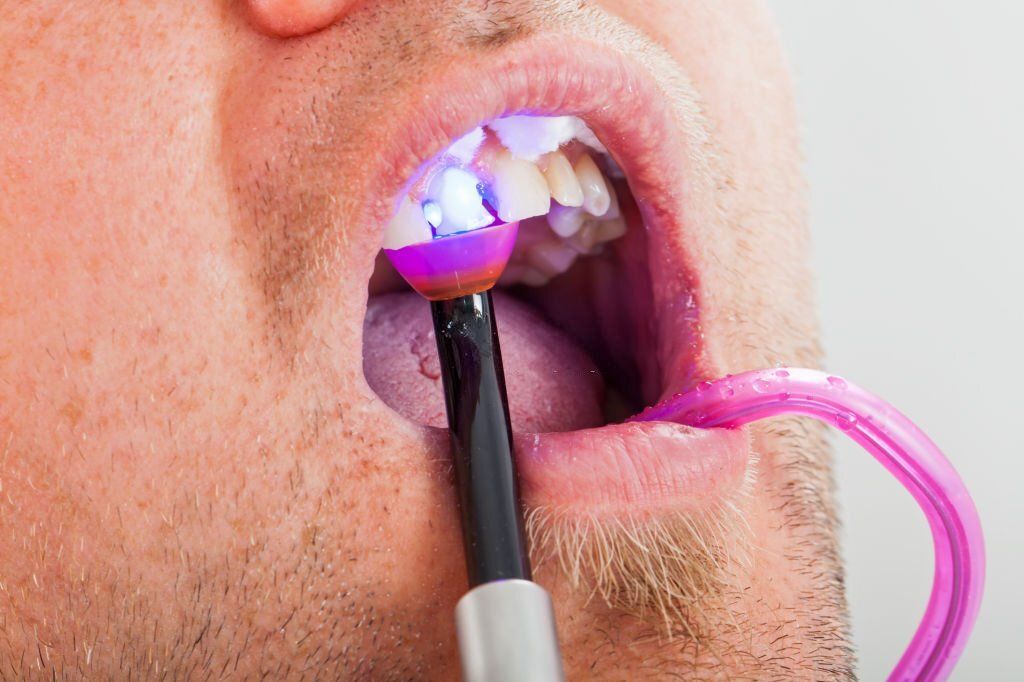This article is reviewed, corrected, and approved by: Julia Weiss CNP| RN | MPH
Are you familiar with the word dental bonding or teeth bonding? It's a dental-related thing where use this tooth-colored resin material to change how your teeth look.
It can make them look bigger, smaller, or even change color. It's a way to improve your smile and boost your overall oral appearance and confidence!
What Is Dental Bonding?
This is a process of assessing someone's teeth, such as checking for chips, discoloration, or misshapenness. If someone is looking to improve oral health and aesthetics, dental bonding can be the perfect solution. This procedure can make them bigger or smaller in size, change their shape, or even fix any damage caused by accidents or injuries.
Is Dental Bonding Necessary?
Most people get confused that do they need teeth bonding or any other dental modification. Here are some reasons and why teeth boding is necessary-
- Concealing chips or cracks in teeth.
- Masking tooth discoloration.
- Closing gaps between teeth.
- Lengthening teeth appearance.
- Changing tooth shape.
Aside from filling cavities, replacing old fillings, and protecting exposed roots, dental bonding can also be used in restorative dentistry, such as teeth implants. To learn more about teeth implants, read this article: 6 Types of Dental Implants: Pros-Cons & How They Work?
You can feel more confident and good-looking with this treatment that is really effective. Your smile can be improved, and you will be happy with the results.
What Are The Advantages & Disadvantages of Dental Bonding?
Advantages
- Minimally invasive, preserving enamel.
- Cost-effective compared to alternatives.
- Versatile in addressing various cosmetic issues.
- Quick, often completed in one visit.
Disadvantages
- Not as stain-resistant as porcelain.
- Shorter lifespan (3 to 10 years) with potential for chipping.
- Not suitable for extensive transformations.
Before Teeth Bonding: Steps of Dental Bonding
Before the procedure, your dentist assesses your cosmetic goals and dental health. During the procedure:
- Tooth shade selection using a shade guide.
- Preparation involves roughening the teeth and applying a hydrating liquid.
- The material is molded to the desired shape with composite resin.
- Curing the material with a special light to bond it to the tooth.
- Polishing for a natural shine.
On average, each tooth usually requires a procedure that lasts somewhere between 30 to 60 minutes.
Dental Bonding vs. Veneers
Veneers are a type of customized shells meant for masking the front surface of teeth. They can address issues like discoloration, chipping, and gaps between teeth. Here are the key difference between teeth bonding and veneers.
Teeth Bonding Aftercare
If you're looking into dental bonding, don't worry too much about any pain. It usually doesn't affect the nerves in your teeth, so that you won't need anesthesia.
You might feel a little sensitive afterward, but you can easily take over-the-counter pain meds to help. Just make sure to take good care of your teeth after the procedure with regular brushing, flossing, and check-ups at the dentist.
Recovery, Longevity, and Safety of Teeth Bonding
If you're considering dental bonding, it's important to know that the recovery process is quick and won't disrupt your daily routine. By taking good care of it, teeth bonding can endure for a period of 3 to 10 years.
It poses no risks to oral health, provided your teeth and gums are healthy. It is also reversible due to no enamel removal.
When to Consult a Dentist?
Consult a dentist for cosmetic concerns like chips, gaps, or discoloration. If you've undergone dental bonding and notice bite issues, seek corrective care from your dentist.
The Bottom Line
If you're looking to improve the way your smile looks, dental bonding is a great option. It's very flexible and works really well. If you have gaps, chips, discolored, or misshapen teeth, dental bonding could be a solution.
It's a minimally invasive treatment that can help you achieve a beautiful smile without removing natural tooth structure. If you want to know if dental bonding is right for you, better to talk to an expert dentist.
Frequently Asked Questions (F.A.Q)
Q: How Long Can Teeth Bonding Last?
A: Teeth bonding can last from 3 to 10 years or even more. It depends on the quality of the bonding material used and the oral hygiene practices of the individual.
Q: What does teeth bonding do?
A: Teeth bonding repairs chips, gaps, and discoloration.
Q: How many times can a tooth be bonded?
A: Teeth can be bonded multiple times.
Q: Is bonding better than braces?
A: Bonding and braces serve different purposes. Bonding is for cosmetic fixes, while braces are for orthodontic alignment.
Q: Do bonded teeth look fake?
A: Bonded teeth can look natural if done well properly.
Q: How much does teeth bonding cost in the US?
A: Typically, the cost of teeth bonding in the US ranges from $100 to $500 per tooth. This may vary based on the skill level of the dentist and the quality of their work.


